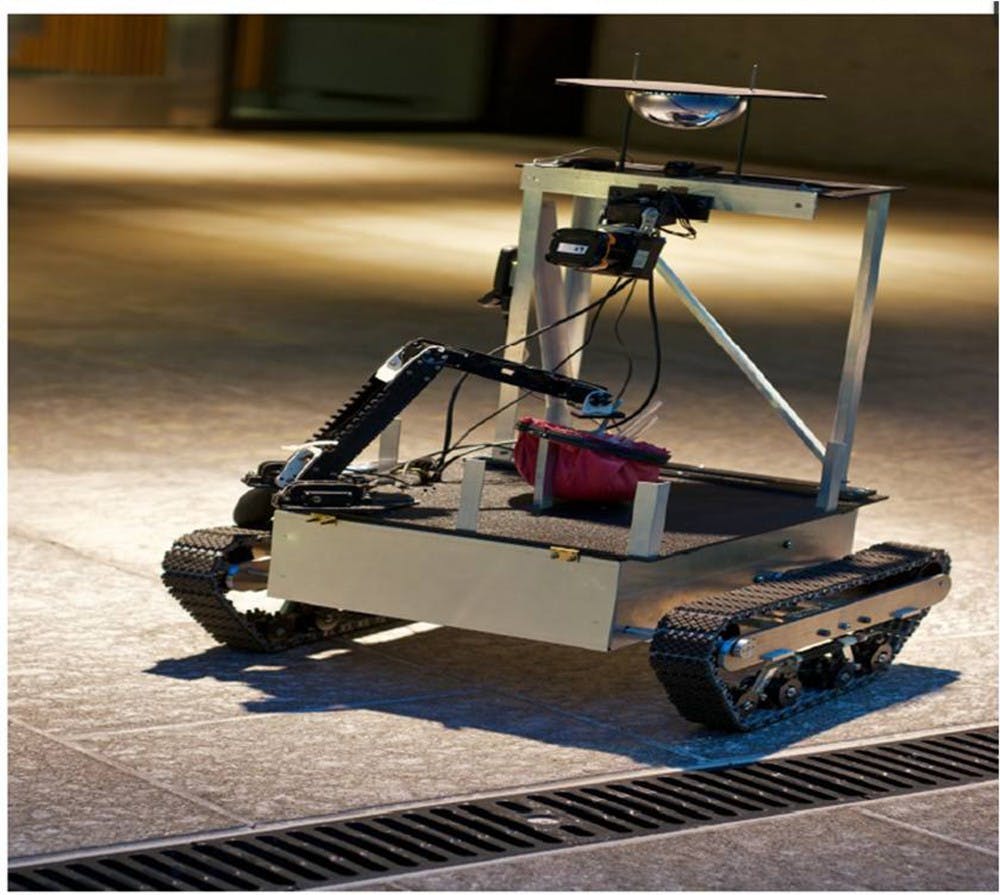The UPenn Space, Mobile, and Autonomous Robotics Team is preparing to blast off into a National Aeronautics and Space Administration-sponsored competition in June.
Founded last year, the team — which consists of 30 members — has received support from Penn’s globally recognized General Robotics, Automatic Sensing and Perception Lab.
The majority of USMART consists of graduate students pursuing degrees in robotics, but a few undergraduates make up the team as well. Regardless of age differences, the team is united by a common passion for robotics.
“The interest is what’s really important because if you’re interested, then everyone can help out each other,” first-year Computer Vision graduate student Mengzi Zhang said.
This summer, USMART will compete in NASA’s second annual RASC-AL — Revolutionary Aerospace Systems Concepts-Academic Linkage — Exploration Robo-Ops competition, which will feature eight teams from different universities across the country.
Each team is given a $10,000 stipend to spend on robot hardware, transportation fees and other expenses.
Prior to the competition, teams have six months to build a robot capable of performing a series of challenging tasks.
“The objective for the rover is to traverse the terrain and pick up objects of interest and return them to the home base,” said team member Jonas Cleveland, a second-year Robotics graduate student.Teams are judged based on several criterion. The robot’s performance makes up 60 percent of the overall score, while development of a website, community outreach, a written paper and other factors make up the rest.
USMART’s ENVOY2, which is currently in development, is much more advanced than last year’s ENVOY1.
“This year, we’re using bigger wheels, and we’re hoping we can get the robot off the ground to prevent sliding in the sandy area,” Zhang said. “If there’s sliding, then you can’t go anywhere.”
Zhang added that the team’s primary goal for this year is “to work on the vision part of the robot and make it completely autonomous.”
As a result, the robot will be able to think on its own and will not require significant human intervention.
Although the competition will be held at the Johnson Space Center in Houston, Texas, some members of USMART will stay behind in Philadelphia to control the robot via remote.
“You are simulating a lunar mission,” Cleveland said. “A team of students stays back, which simulates a mission control center.”
In addition to developing robots and conducting research in the field, the team is also getting involved in the local community.
USMART plans to participate in an Upward Bound program through which they will challenge high-school students to build their own robots. The team will also attend several Philadelphia science festivals, as well as National Robotics Week at Penn, Zhang said.
For Wharton senior Tyrone Thomas, the diversity within USMART has enriched his experience.
“I really like that it’s a cross between undergraduate and graduate students from completely diverse backgrounds,” he said. “The team is highly accomplished, and we have people working for different companies and from different parts of the country.”
Even though USMART’s roots are heavily science-based, Thomas noted the team’s inherent entrepreneurial spirit and business potential.
“We have our own coding that goes into the robot, and we are exploring whether or not we will license out the code that operates the robot, or create a personal robot in the future,” he said. “We have a product we have to get out, marketing needs … It’s kind of cool to be a part of that.”



